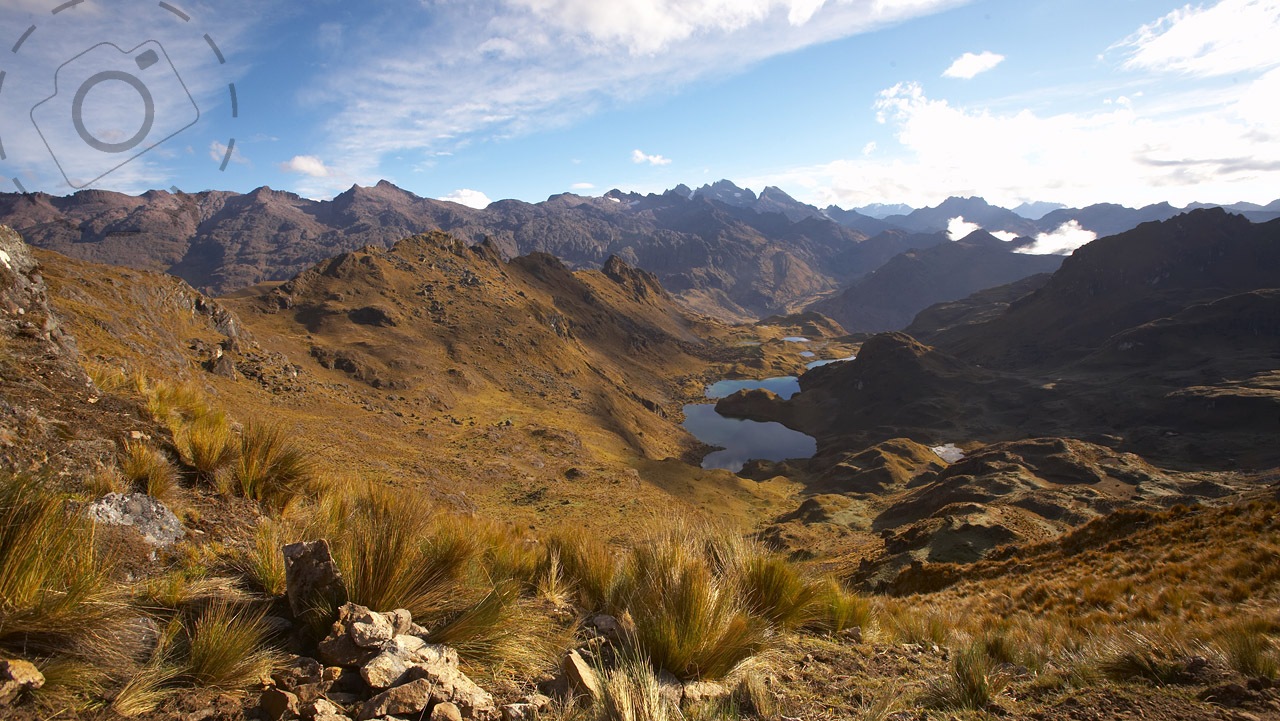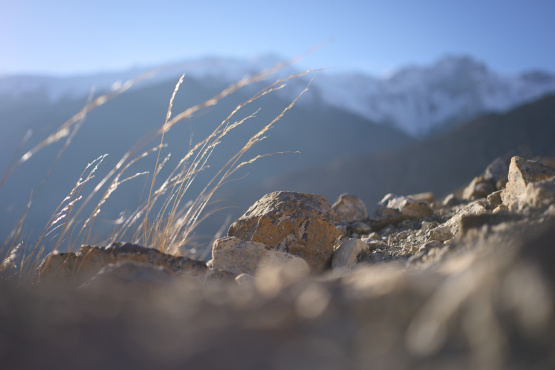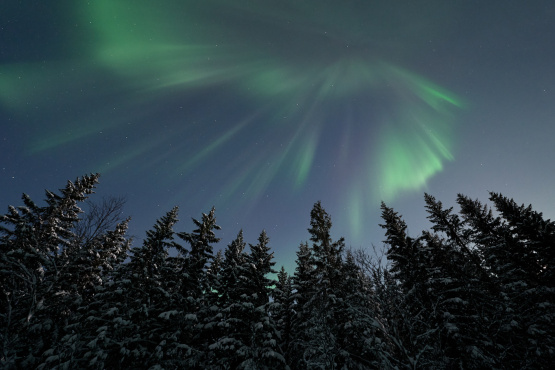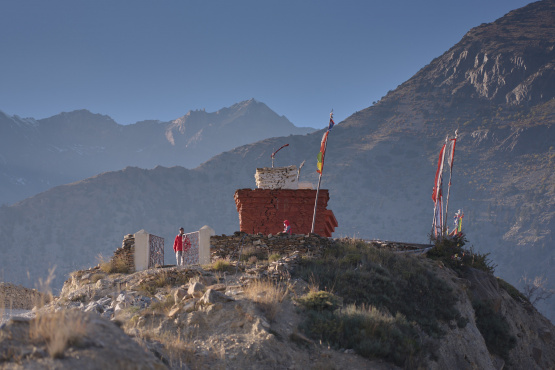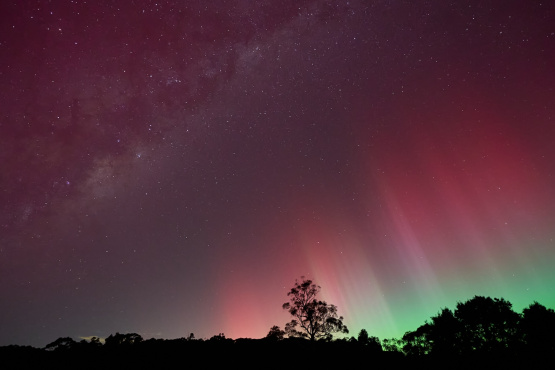The Inca Trail is so popular these days that hardly anybody goes there. Well almost. Surprisingly few people who plan to visit the trail manage to get on it because there is a permit system in place to restrict numbers. Left unchecked the demand for trekking would destroy the trail, hence walking poles are no longer allowed, you have to reduce your pack weight to 10kg and you can forget about having a horse to porter anything up the hill.
The permit system raises a few problems for independent travellers as the commercial trekking operators buy their share of permits well in advance. Solo trekkers can no longer turn up the day before and buy a permit and even getting on the commercial treks require booking well in advance. Or you can go trek somewhere else.
To the north of Cusco the Lares Ranges tower above the Sacred Valley, a massive set of mountains with peaks reaching 5,750m. Even the high-passes between one valley and another can exceed 4,400m, which is nearly 2 kilometres higher into the sky than Machu Picchu itself. A handful of commercial operators have started supported treks into the Lares Ranges, offering scenery that you wont find on the Inca Trail plus a chance to meet the Quechua people who pre-date the Incas in the Sacred Valley by several thousand years.
Modern Quechuan are farmers who survive on the margins of arable land. Potatoes do grow at 3600m, if you plant the right ones, and only the llamas and alpaca are suitably adapted to the conditions to graze in good health. Horses are a luxury, better tempered than your average llama but high maintenance in an environment with so little nourishment.
The only horses I saw during my Lares Trek were the ones carrying our camping gear and cooking pots, or maybe an occasional young trekker when they got too tired to walk.
The trail itself offers varied scenery and surprisingly few encounters with people, although arriving at a lake we usually meet farmers with their lamas. Whenever the trail dips low into a valley you can expect a small hamlet to be occupying the best land, taking advantage of the glacial melt that feeds the rivers year round.
Winter is when you want to go trekking in Peru, when the skies are clear and the temperatures cool. During the day the high-altitude sun blazes down and you rarely need more than a shirt to stay warm while you walk, but at night-fall the mercury plummets and conditions can get rough if you're not properly prepared. I spent each night wrapped in long johns, polar-fleece pants and a sub-zero sleeping bag. I used my day-pack for a pillow, but the water bottle inside my pack was frozen solid by morning. That's pretty cold.
Sub-zero temperatures are hard on campers, but it seems the llamas prefer anywhere with a little warmth as well. Our camp site on the first night was in fact one of the llama pens, and the llamas weren't too happy about giving up their patch. One of them managed to escape from the pack in the neighbouring pen and joined our camp, digging about my tent as though rightfully he should be allowed inside for a cup of tea and a biscuit. A very unhappy Quechua farmer came running out of his house to sort out the trouble. It seems this was not the first time the llama had gone camping.
Back in their own pen the llama herds huddle together for warmth, waiting patiently for the first rays of the morning light to clear away the frost and ice. It takes a while for the sun to clear the surrounding mountain peaks, and the sky above is brilliant blue even though the valley remains in shadows. Our tent covers are frosted white and we mill around the dining tent to make the most of hot drinks while breakfast is being prepared.
Having our own chef to cook up meals at at every rest stop may seem like cheating for an outdoor adventure, but I'm willing to cope with the indignity if it means a cup of steaming hot chocolate with pancakes to start the day.
The villagers let their llamas loose at dawn and they hoof up to the top of the hill where the warming sunlight has already arrived. Possibly the same troublesome llama that wanted to go camping last night has escaped into the potato field and made a start on breakfast. It takes a good ten minutes of arm waving and yelling from the farmers children to chase the llama back onto the mountain where he belongs.
The standard trek through the Lares Ranges takes three days, starting at 3400m and climbing to a high-pass of 4400m before camping overnight at 3700m. The second day climbs steeply to 4400m descends through villages at 3600m, ascends again to 4,500m and from then on heads gradually downhill. The second night of camping is tucked into a mountain side next to the still waters of Ipsaycocha Lake. The llamas love the location too and herds rumble through the camp as soon as day breaks.
Supported trekking of this nature are a genuine luxury but even with your gear ported up the hill on horses the altitude makes trekking, and even sleeping, something of a challenge.
In many ways the Lares Trek is more difficult than the Inca Trail because it goes higher and makes three major ascents before you leave the mountains. Most people spend several days in Cusco before the trek so they can adjust to the altitude, or even better head to Lake Titicaca to climb up and down a few islands at 3800m to give the lungs a workout in the thin air.
Three things make Lares a great diversion to the Inca ruins of the Sacred Valley. Firstly the remote lifestyle of the Quechua farmers is beautiful, with their stone villas and basic existence set against such a vast landscape. Second, the landscape itself is remarkable as you cross from one valley to another and look down upon glacial lakes and rivers. Finally it's the llamas, such awkward looking creatures that make it possible for the Quechuan to live here.
Llamas may be hairy beasts that smell funny and have very bad manners, but in Peru this combination makes you pretty popular.
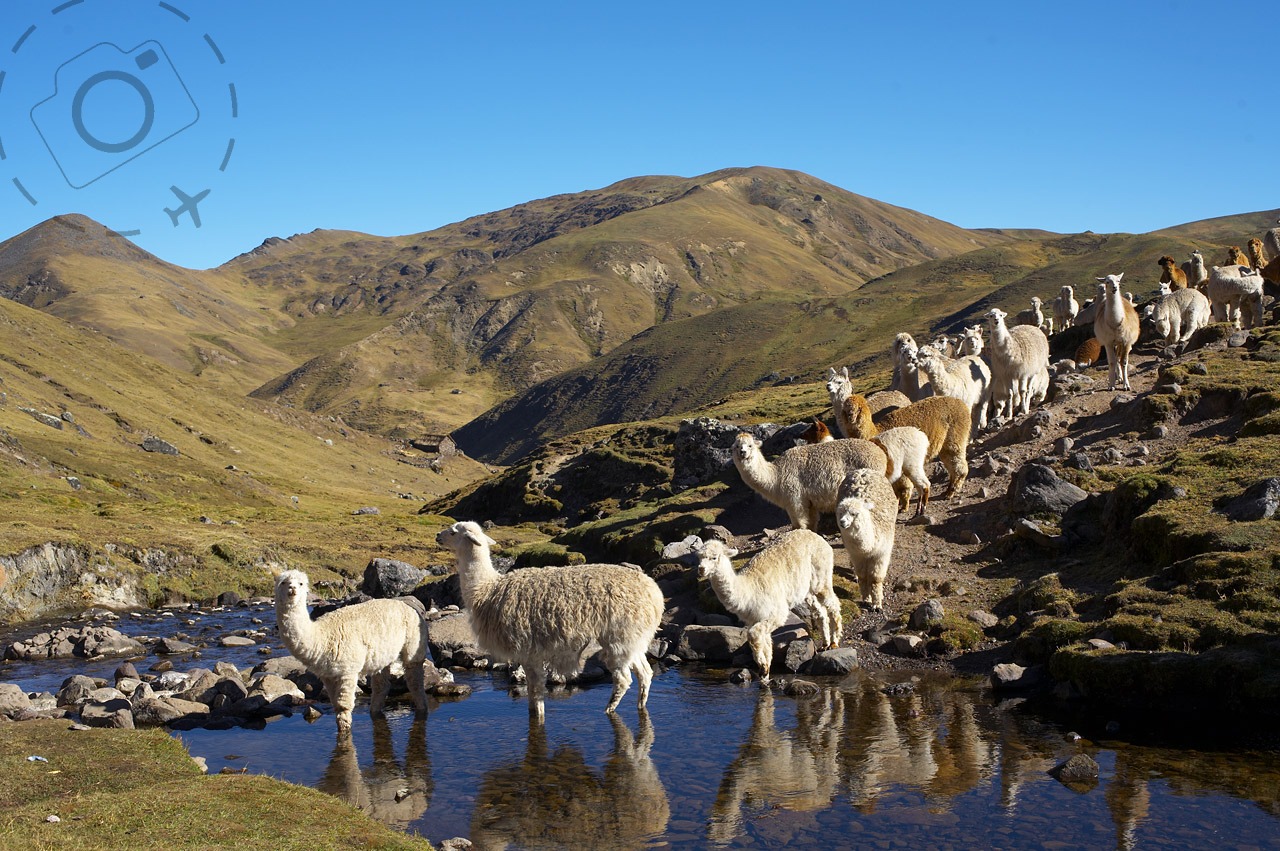
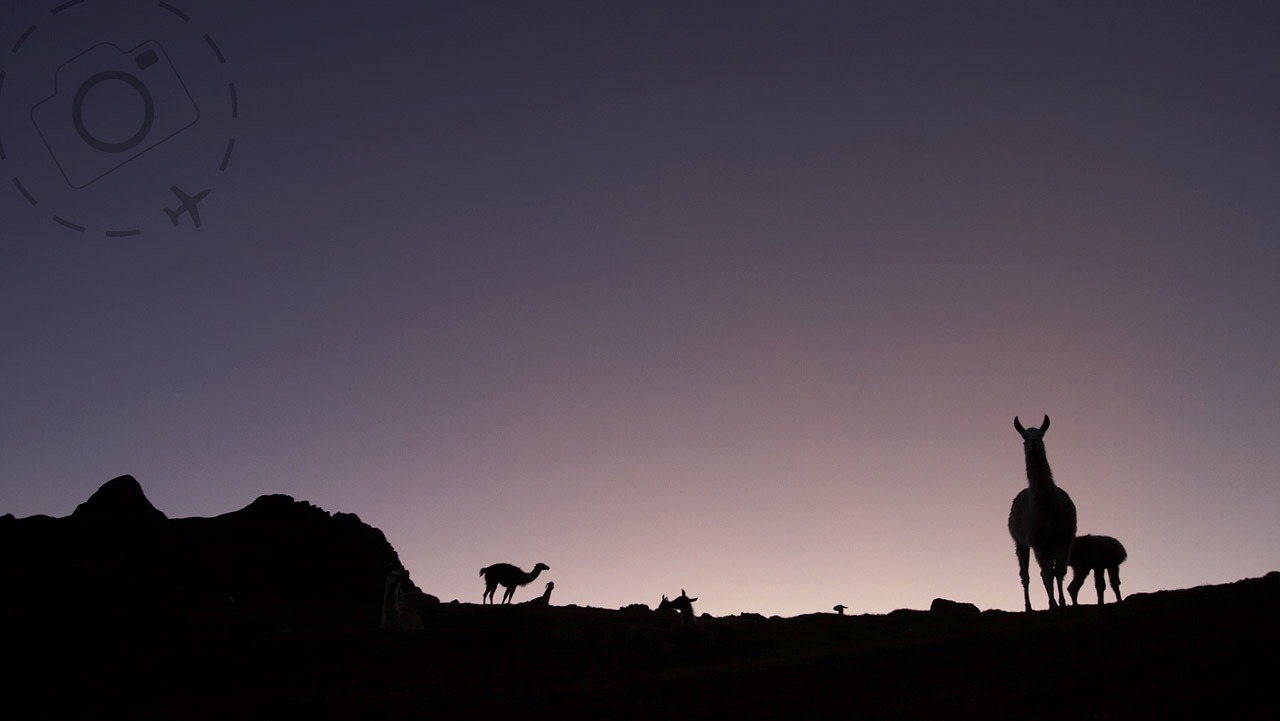


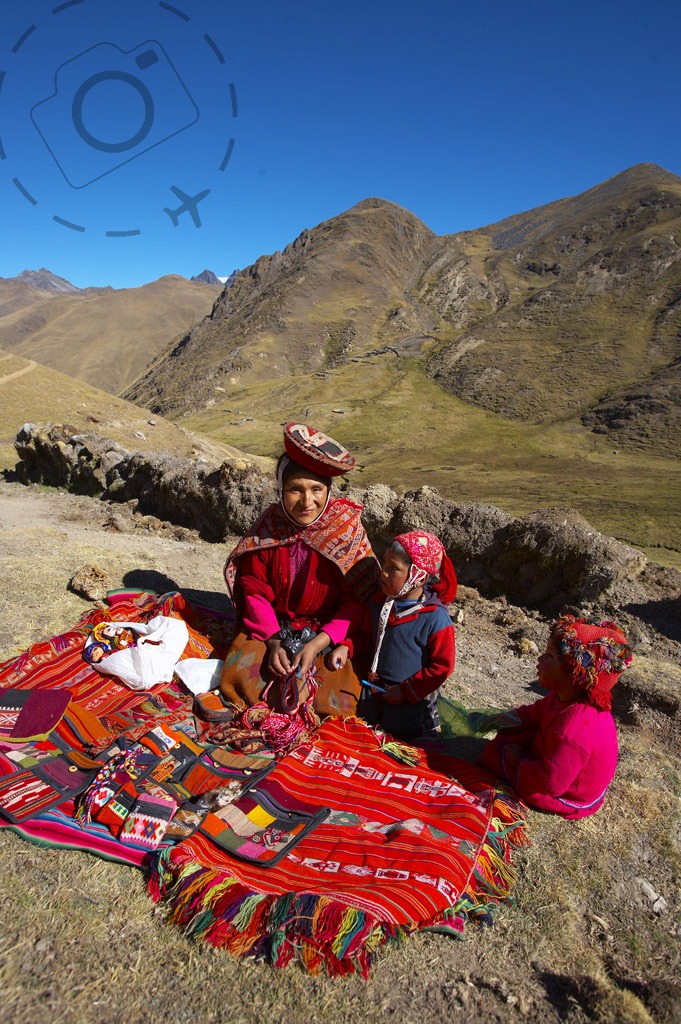

Keep Reading
Join Ewen's newsletter for monthly updates on new photography articles and tour offers...Subscribe Here

